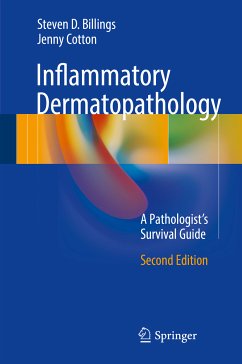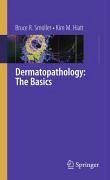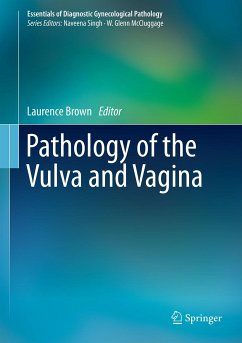
Inflammatory Dermatopathology (eBook, PDF)
A Pathologist's Survival Guide
Versandkostenfrei!
Sofort per Download lieferbar
88,95 €
inkl. MwSt.
Weitere Ausgaben:

PAYBACK Punkte
44 °P sammeln!
Inflammatory Dermatopathology: A Pathologist's Survival Guide provides expert guidance for the reader to develop a systematic approach to the diagnosis of inflammatory disorders of the skin. It covers the most common and clinically important inflammatory disorders of the skin through an image-rich easy to read format. Each section includes practical tips to help navigate the differential diagnosis. Microscopic features are listed as bullet points to enhance readability. Examples of diagnostic comments that practicing pathologists can utilize in their own reports are also provided. Demonstratin...
Inflammatory Dermatopathology: A Pathologist's Survival Guide provides expert guidance for the reader to develop a systematic approach to the diagnosis of inflammatory disorders of the skin. It covers the most common and clinically important inflammatory disorders of the skin through an image-rich easy to read format. Each section includes practical tips to help navigate the differential diagnosis. Microscopic features are listed as bullet points to enhance readability. Examples of diagnostic comments that practicing pathologists can utilize in their own reports are also provided. Demonstrating a global understanding of inflammatory dermatoses in a quick and efficient manner, Inflammatory Dermatopathology: A Pathologist's Survival Guide will both guide the reader in how to approach inflammatory dermatoses, as well as provide a tool that will help with the writing of surgical pathology reports.
Dieser Download kann aus rechtlichen Gründen nur mit Rechnungsadresse in A, B, BG, CY, CZ, D, DK, EW, E, FIN, F, GR, HR, H, IRL, I, LT, L, LR, M, NL, PL, P, R, S, SLO, SK ausgeliefert werden.













